How to eat buckwheat for weight loss: recipes with soy sauce and other low-calorie sauces
Among the variety of regimes and methods of losing weight, diets based on cereals are the most widespread. The buckwheat diet is an inexpensive, simple and effective way to get in shape and remove extra centimeters from your waist. The obvious advantage of buckwheat is its high content of useful elements, which helps not only to get rid of unnecessary pounds, but also to improve the health of the body as a whole.
People who have consciously decided to lose weight on buckwheat are forced to give up fried and fatty foods, smoked foods, butter, high-calorie sauces and seasonings, and salt. But it’s hard to imagine any dish without adding salt, since it is the most popular flavor enhancer. For those who do not accept eating unleavened porridge, the ideal option would be buckwheat with soy sauce for losing weight.
Chemical composition and nutritional value of buckwheat
The chemical composition, nutritional and dietary properties of cereals directly depend on the variety, growing and storage conditions, and method of heat treatment. In terms of benefits for the body, the kernel is considered the most suitable.
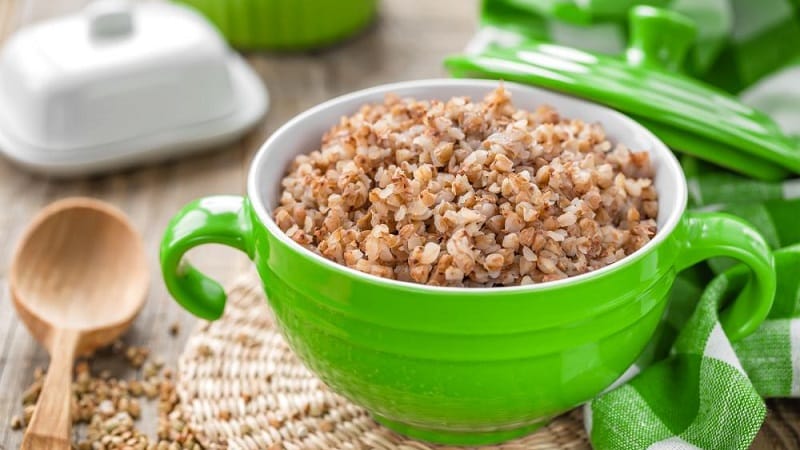
On average, 100 g of raw grains contain:
- water - 14 g;
- dietary fiber - 11.3 g;
- ash -1.7 g;
- starch;
- easily digestible carbohydrates (sucrose, fructose, maltose, lactose);
- essential and non-essential amino acids;
- fatty acid.
Microelements and vitamins
Buckwheat is a storehouse of essential vitamins. The grains contain beta-carotene (provitamin A), B vitamins (thiamine, riboflavin, niacin, choline, pyridoxine, folate, pantothenic acid), ascorbic and nicotinic acids, vitamins E, K, H.
The mineral composition is no less diverse. Buckwheat contains a high concentration of silicon (270% of the daily value in 100 g), manganese (78%), copper (64%), magnesium (50%), molybdenum (49.1%), phosphorus (37.3%) , iron and phosphorus (37%). In smaller quantities there are calcium, potassium, sodium, sulfur, chlorine, iodine, cobalt, selenium, fluorine, chromium, zinc.
Calorie content, BJU and glycemic index of boiled buckwheat
During the cooking process, buckwheat loses two-thirds of its calorie content - for porridge with water it is only 101 kcal.
100 g of buckwheat porridge, prepared from kernels without salt and oil, contains:
- proteins - 3 g;
- fats - 3.4 g;
- carbohydrates - 14.6 g.
The glycemic index of buckwheat varies between 50-60 units.
Features of consuming buckwheat for weight loss
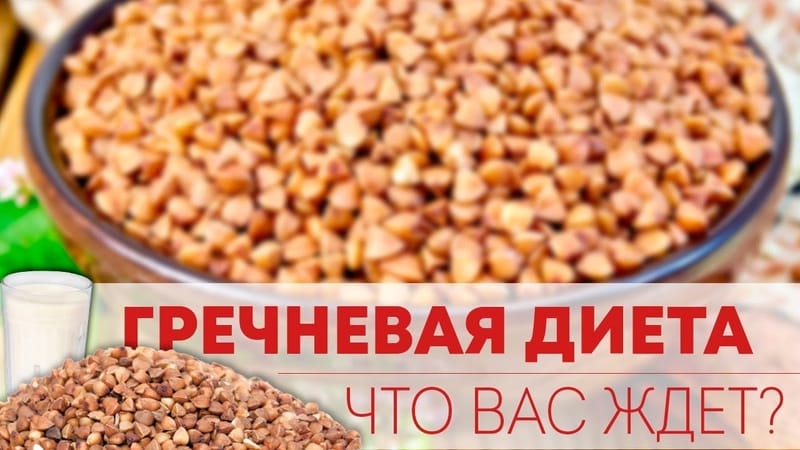
The buckwheat diet is based on eating directly steamed cereal or in combination with other products. The effectiveness of weight loss is achieved due to the reduced calorie content of the menu and the absence of fast carbohydrates in the diet. Placed in such conditions, the body is forced to draw its reserves from adipose tissue to replenish the energy it needs.
With the correct organization of the dietary regime, the body will receive substances important for life with buckwheat.
For reference. The benefits of buckwheat for weight loss is the presence of plant fiber in the composition, which provides quick and long-term saturation, removes excess fluid from the body, cleanses the intestines from waste and toxins, normalizes metabolism and stool.
Buckwheat goes on sale in four production forms. These are kernel cereals (whole grains, peeled from the surface shell), chaff (peeled and coarsely crushed grains), Smolensk groats (cleaned finely crushed grains) and buckwheat flour.
Taking into account the beneficial properties, the best product for the buckwheat diet is considered to be whole grains. It compares favorably with other varieties by the high content of primary valuable elements in the grains: proteins, amino acids, vitamins, mineral salts.
To preserve the greatest amount of nutrients and valuable substances, the cereal should not be boiled, but steamed with boiling water.
How to cook buckwheat on a diet:
- Sort out a glass of buckwheat and rinse thoroughly until the water runs clear.
- Pour the cereal into a container with a tight-fitting lid. You can use a thermos.
- Pour 2-3 cups of boiling water over the grains. The amount of water can be adjusted depending on the desired consistency. A more crumbly porridge is obtained by adding less boiling water.
- Close the pan with a lid, wrap it in a warm towel, and leave overnight to reach condition.
Ready-made steamed buckwheat porridge must be consumed over the next day in accordance with the chosen diet. There are many dietary regimes with buckwheat, which allows you to choose the optimal one both in terms of diet and duration:
- Buckwheat mono-diet for 3 days. Based on the consumption of steamed buckwheat five to six times a day in unlimited quantities. In the intervals between meals, 30 minutes before or after meals, you need to drink clean water in a volume of 1.5-3 liters per day. On average, you can lose 2-3 kg in three days.
- Diet for 5 days. This diet allows the consumption of buckwheat infused on low-fat kefir. You can eat the products separately, and, as in the previous recipe, steam the buckwheat with boiling water. The peculiarity of this method of losing weight is that cereal removes accumulated waste and toxins from the intestines, and kefir ensures their rapid removal. A five-day diet can get rid of 4 kg.
- Diet for 7 days. Allows the consumption, within reasonable limits, of steamed porridge and other healthy products, mainly fermented milk products, vegetables, and fruits. You should also drink about 2 liters of clean, still water every day. In a week of this regime you can lose 5-6 kg.
- Diet for 14 days. Since the diet is long, it contains almost all the products a person needs. During the day, they eat buckwheat, which is prepared in different ways: steamed with boiling water, infused with kefir, milk. Vegetables, fruits, lean meats and fish, turkey fillet, eggs, low-fat cottage cheese and cheeses are introduced in limited quantities. You also need to drink at least 2 liters of water every day. On average, the minus is 7-8 kg. If you add physical activity, you can increase the effectiveness of losing weight up to 10 kg.
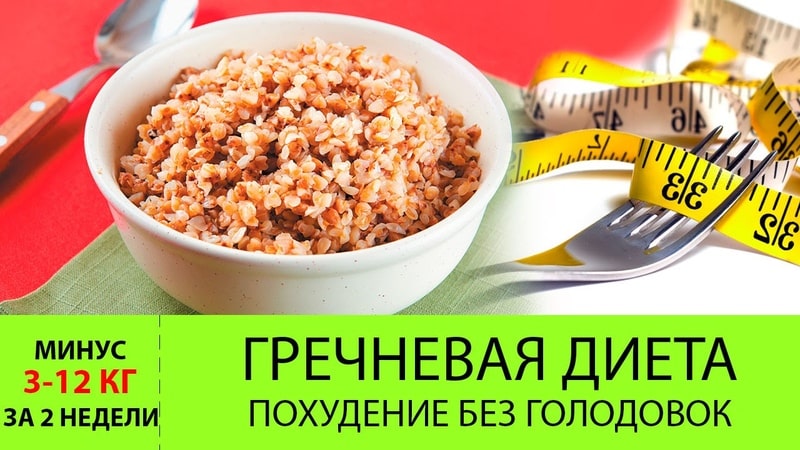
What sauce to eat buckwheat with on a diet
Most often, the taste of buckwheat is adjusted using natural soy sauce, low-fat kefir and other fermented milk drinks, and vegetable oil (olive, flax, pumpkin).
Freshly squeezed vegetable juices are used as a dressing for porridge, the most popular of which is tomato juice. Buckwheat goes well with many foods, so for variety, herbs, spices, dried herbs, and mushrooms are added to the sauce.
Advice. It is necessary to completely abandon high-calorie sauces, mayonnaise, and ketchup. Ideally, use homemade diet buckwheat sauce, so you will be confident in the quality of the product.
Is soy sauce suitable as a gravy for buckwheat when losing weight?
In moderation, nutritionists allow the use of soy sauce during weight loss, but only a natural product that does not contain harmful food additives.
But what about salt, which is found in soy sauce, because it is recommended to exclude it during weight loss? A well-organized diet does not involve giving up salt, but reducing its daily intake to 5 g per day.
Salt in moderation is beneficial for the body and is necessary for the coordinated functioning of internal organs and systems. Its deficiency is manifested by weakness, drowsiness, bad mood, apathy, and headache. Therefore, soy sauce serves as a source of salt when losing weight.
When purchasing sauce, pay attention to the composition, date of manufacture and shelf life. Among the wide range the best buy a product from trusted and well-known manufacturers.
Calorie content and nutritional value of soy sauce
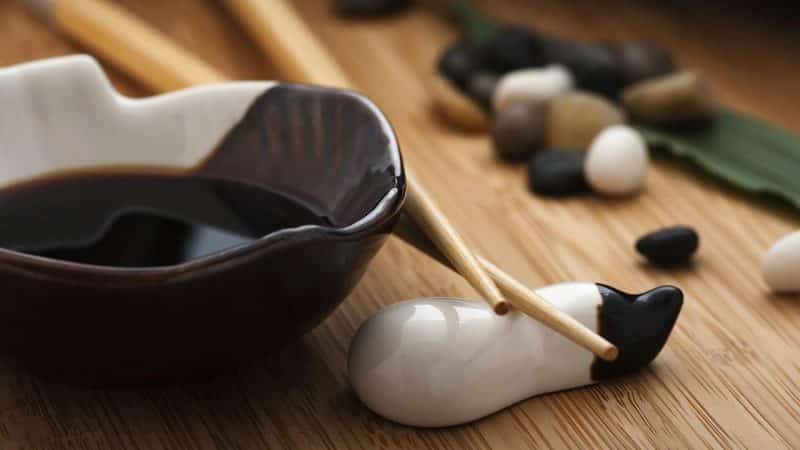
Natural soy sauce has a low calorie content - 53 kcal per 100 g - and on average contains:
- proteins - 8.1 g;
- fats - 0.6 g;
- carbohydrates - 4.1 g.
In addition to proteins, fats and carbohydrates, the composition includes dietary fiber, ash, glucose and sucrose, amino acids, saturated fatty acids, omega-3 and omega-6 fatty acids.
The obvious advantage of soy sauce is that, with low calorie content and low fat content, it saturates the body with useful substances.
Important! Do not forget that the composition contains salt, which, if consumed excessively, reduces the effectiveness of weight loss and retains fluid in the body, which leads to swelling.
Vitamin and mineral composition of soy sauce
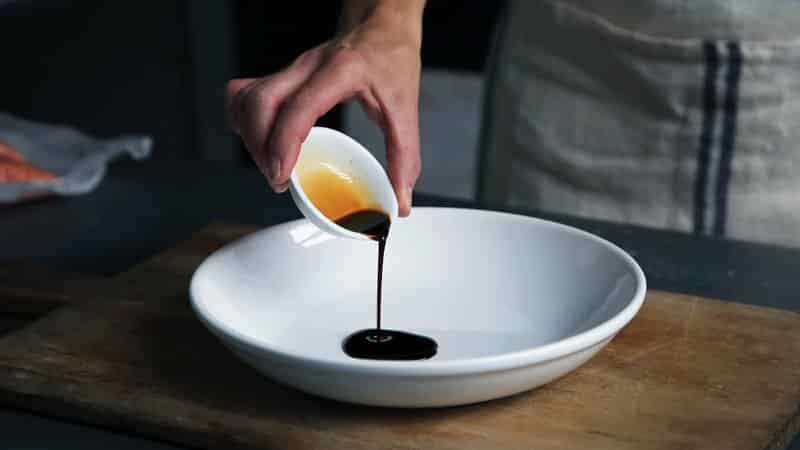
Soy sauce is a thick, dark-colored liquid with a distinctive, distinct odor. Due to the presence of glutamic acid derivatives in the composition, it well emphasizes the taste of dishes.
Soy sauce contains many vitamins: betaine, folic and nicotinic acids, thiamine, riboflavin, choline, pyridoxine, pantothenic acid. Of the mineral salts in the composition, high concentrations of sodium (422.5% of the norm in 100 g), manganese (50.9%), phosphorus (20.8%), magnesium (18.5%) were found. Smaller amounts contain calcium, potassium, iron, copper, zinc, and selenium.
Depending on the cooking method, sauces differ in taste, consistency, smell, and salt content. The most popular Chinese soy sauce, which is made from soybeans with the addition of a small amount of grain. Sauces, in turn, are divided into boiled and mixed.
Nutritionists recommend using boiled and filtered soy sauce both for a regular diet and during weight loss. It contains no additives and consists of salt, water, wheat and beans. While flavoring agents are added to mixed sauces after straining.
What other low-calorie sauces can be added to buckwheat when losing weight?
The diet menu for 7 and 14 days should contain virtually all products from different categories in the diet, thanks to which you can prepare delicious, original sauces from available products. As you can see, the diet on the buckwheat diet can be varied.
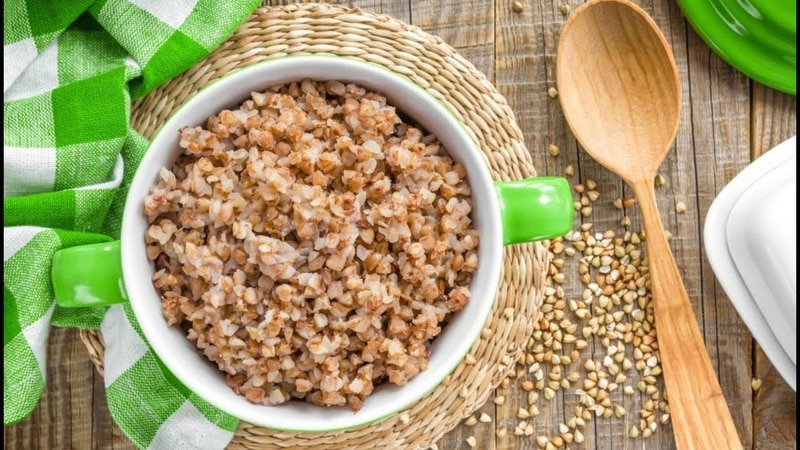
Tomato with herbs
The most famous low-calorie buckwheat sauce.The dish turns out not only tasty, but also healthy. Tomatoes resist free radicals, help protect against various diseases, including cancer, remove excess water from the body, and normalize metabolic and circulatory processes.
Ingredients:
- ripe tomatoes - 0.5 kg;
- onion - 1 head;
- carrots - 1 pc. (if small, then 2 pcs.);
- sweet salad pepper - 2 pcs.;
- garlic - 1-2 cloves;
- vegetable oil - to a minimum;
- spices: basil, Provençal herbs, cilantro;
- greens - dill, parsley;
- salt - to taste.
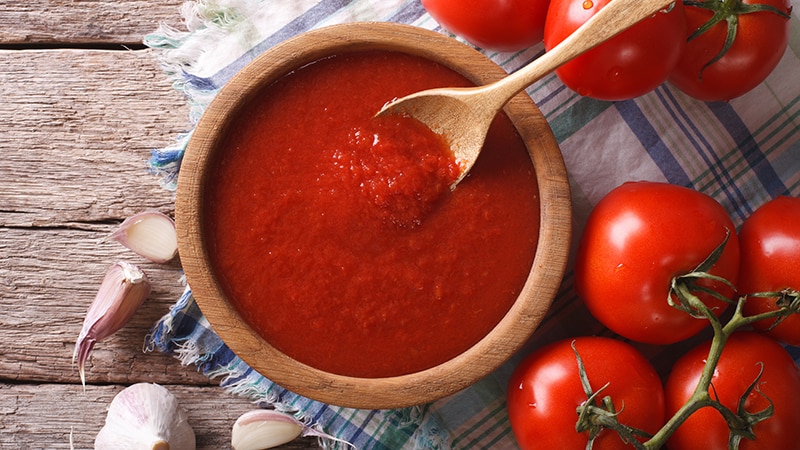
Recipe:
- Peel onions and carrots. Next, cut the onion into small cubes and grate the carrots.
- Chop the garlic using a knife or a special press.
- Pour boiling water over the tomatoes for 30-60 seconds, rinse with cold water, peel and remove the stems.
- Peel the pepper from seeds and internal membranes and cut into portions.
- Place tomatoes and peppers in a blender bowl and blend until smooth.
- Heat vegetable oil, add onion, sauté until golden brown. After 5-10 minutes, add carrots and cook for another 5 minutes. Then add tomato puree, spices and salt, mix. Simmer over medium heat for 5-7 minutes. Top with finely chopped herbs.
Dietary sour cream gravy
To prepare it, you need sour cream with a low fat content - 10% or 15%.
Products:
- sour cream - 50 g;
- wheat flour - 1 tbsp. l.;
- water - 150 ml;
- salt, spices;
- vegetable oil - 1 tbsp. l.;
- greenery.
How to make sour cream sauce:
- Heat vegetable oil in a saucepan, add flour and sauté until creamy, stirring constantly.
- Then add water and stir well so that the mixture has a uniform consistency, without lumps. Boil over low heat for 5-10 minutes.
- Add sour cream, salt, spices, dried herbs of your choice to a saucepan, stir and bring to a boil. Remove from stove. Sprinkle chopped herbs on top.
White Greek sauce with cucumbers
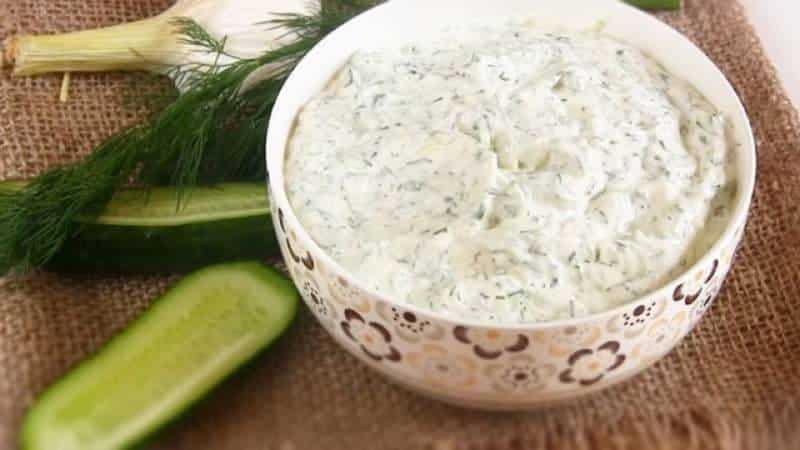
Another dietary gravy for buckwheat. To prepare it you will need:
- fresh cucumbers;
- natural yogurt;
- garlic;
- dill;
- basil;
- mint;
- salt.
Recipe:
- Rinse the cucumbers well, grate them, place them in gauze folded in several layers and squeeze.
- In a separate bowl, place the cucumber mass, chopped garlic, finely chopped herbs, add natural unsweetened yogurt, spices, salt, mix. The sauce is ready to eat.
Buckwheat with soy sauce for weight loss: reviews and opinions of nutritionists

Analyzing the reviews of women who used buckwheat porridge with soy sauce for weight correction, we can note the effectiveness of such nutrition. The best results are observed in people with significant excess body weight. Combining cereal with soy sauce or other dietary sauces helps make the diet easier.
Nutritionists do not speak so flatteringly about the buckwheat diet, since a sharp change in the usual diet and deficiency of many substances necessary for the body can cause harm to health and provoke exacerbation of chronic diseases.
Marina, 49 years old: «I love buckwheat very much, and when I needed to lose weight, there was no doubt that it would be a buckwheat diet. If you follow a diet for less than three days, you can eat bland porridge, but with a longer diet, like mine, it gets boring very quickly.Soy sauce perfectly complements buckwheat, adds a new taste and does not reduce the effectiveness of weight loss. My result for 7 days was minus 5.5 kg. At the same time, the diet is easily tolerated, there are no attacks of hunger or adverse reactions in the form of weakness, malaise, and drowsiness.”
Olga, 31 years old: “Any diet is, in fact, a serious test for the body, and it doesn’t matter whether you eat fresh buckwheat or season it with soy sauce or any other dietary gravy. For those who have chosen this path of losing weight, I advise you not to forget that after finishing the diet, if you return to your usual unhealthy diet, the result will come to naught. The best option is to do it once every two weeks. fasting day on buckwheat".

Conclusion
Buckwheat with soy sauce for weight loss is especially popular among people struggling with excess weight. The cost of the main ingredients is insignificant and affordable for everyone; preparing porridge is simple and does not require any special skills. Due to the presence of low-calorie sauces in the diet, the menu is varied, does not become boring, and is easily tolerated, without a constant subsequent feeling of hunger.
To maintain health and well-being throughout the diet and avoid negative consequences, it is better to opt for less strict options and select the optimal regimen with the obligatory consultation of a nutritionist.